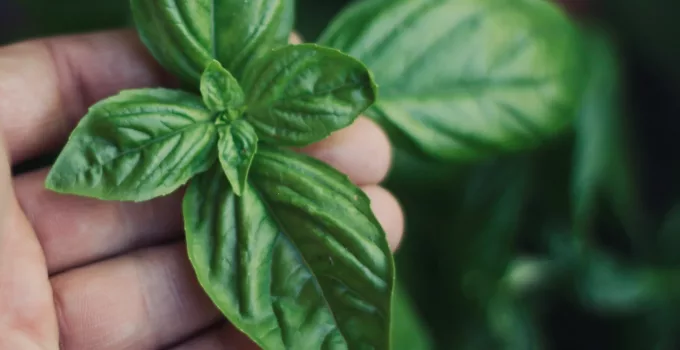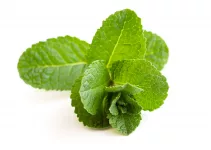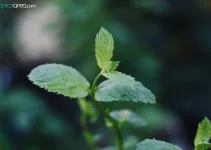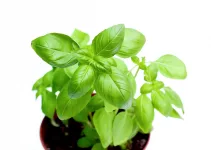If you’ve noticed your basil leaves turning yellow, before going into what causes the shift in color, I just want to reassure you that there are solutions for most of the causes.
Yellowing leaves is the colloquial name for basil chlorosis. When we’re talking about basil chlorosis, we’re covering all varieties, grown indoors and outdoors.
The first problem is figuring out what’s wrong, which can be a matter of eliminating all the other causes and finding your answer. It’s not so simple sometimes.
I will say that if it seems like too much trouble, you can just start with a new plant, but there’s a risk of the same thing happening again in the future.
Table of Contents
Basil Leaves Turning Yellow: Main Causes & Fixes
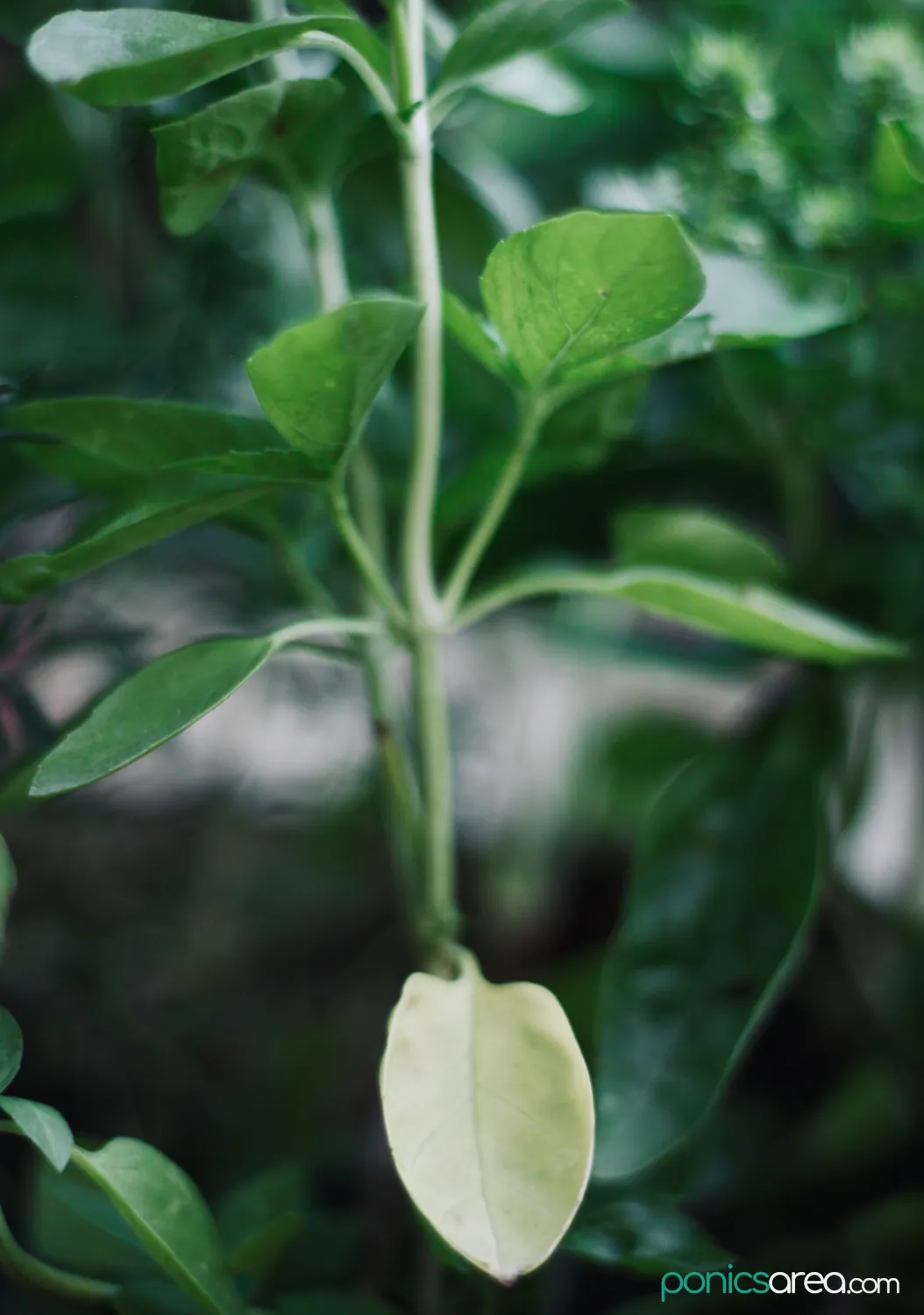
Let’s first establish what causes yellow basil leaves. Once you’ve figured out what’s wrong with your plant, you will know what you can do to restore it or to save what’s left as green leaves.
I will just warn you that sometimes the only solution is to remove the affected plant and start with a new one.
That’s the case with some diseases that can affect basil plants and have symptoms like basil leaves turning yellow or basil leaves turning yellow with brown spots or basil leaves turning yellow with black spots.
1. Overwatering & Poor Drainage
These are two of the most common factors for basil leaves turning yellow. Overwatering is actually one of the most common cause for plant problems. It can sometimes even be misdiagnosed as pest damage.
Read this article on how often to water basil so that you can avoid giving too much water to your herb.
The symptoms for overwatering are:
- droopy plants
- yellow leaves
- brown leaves
- mildew
- root rot
- blisters, bumps on the leaves
- algae growth on the soil
- foul smell emanating from the soil
- pots overflowing, making a mess
We can’t talk about overwatering without talking about poor drainage. The two are linked because it’s quite hard to overwater a plant if it has good drainage.
Simply put: good drainage ensures that you won’t overwater plants. The soil should be moist but not soggy.
What qualifies as good drainage? Good soil and holes at the bottom of the pot for potted plants.
Basil needs a light, well drained, rich soil in organic matter or compost. A light potting mix that contains a high percentage or organic matter will work very well.
Overwatering & Poor Drainage: Solutions
- you can cut the yellow leaves because they will not turn green again – it’s not about turning the yellow basil leaves green again, it’s about saving the plant
- transplant the plant into a new pot as soon as you can – the new pot should contain dry light potting soil, a well drained soil, rich in organic matter or compost
- add a layer of small pebbles at the bottom of the pot for better drainage
- organic matter/compost will also prevent root rot
- or transplant it in the garden if you have outdoors access
- basil is not a plant that needs to be watered daily like mint does – even watering it once a week can be enough if it’s not too hot outside, in hot temperature it might need watering once every 4 days or so
2. Underwatering
Undewatering can also cause yellow basil leaves. But a sustained lack of water mostly leads to dusty, dull, pale leaves that then turn dry and brittle.
The plant can be revived by a vigorous watering, if the lack of water is noticed in time.
3. Too little light
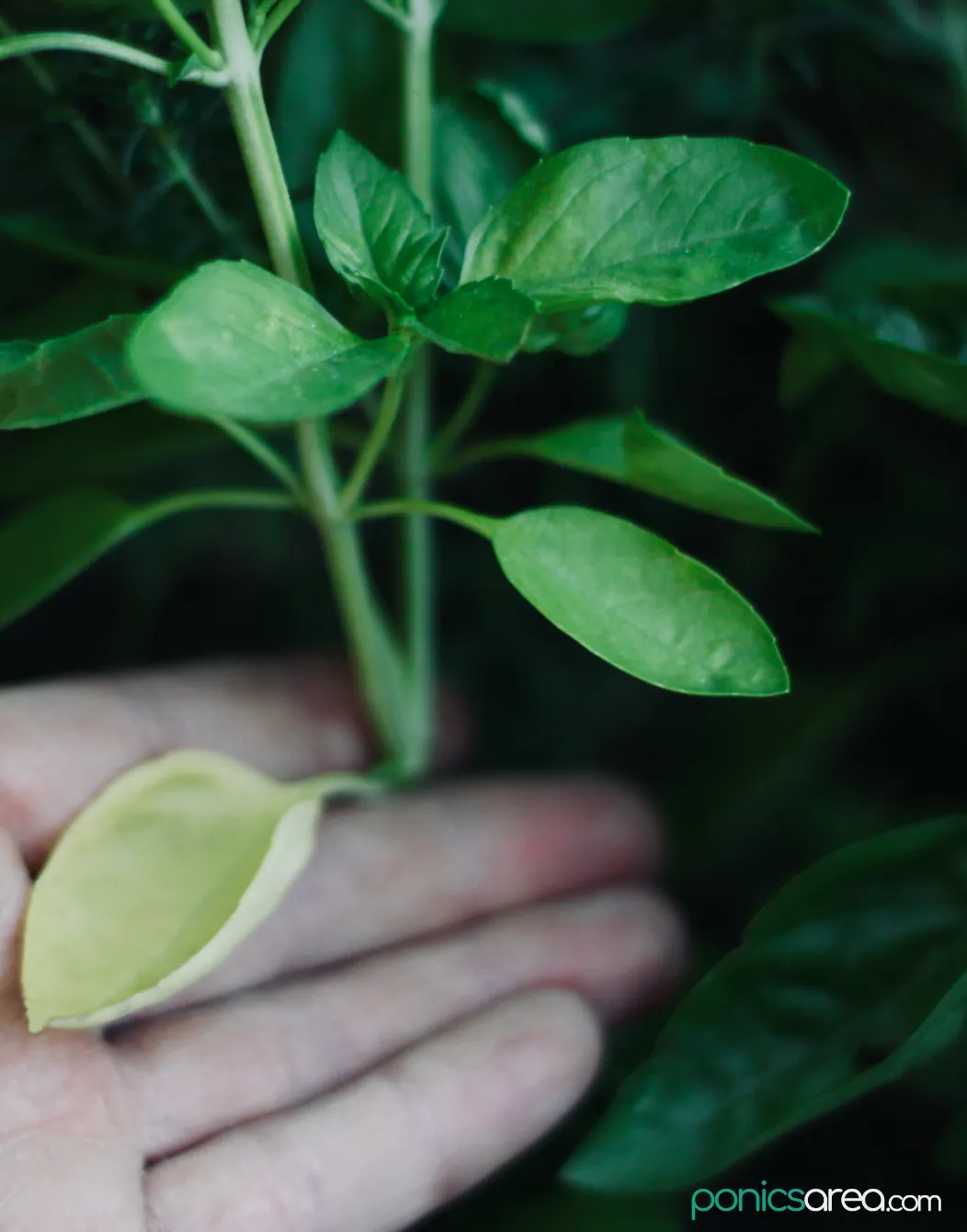
Yellow basil leaf due to lack of sunlight
I use the terms too little light instead of too little sunlight because not everyone lives in a place that is visited by enough sunlight during the day.
Moreover, if you’re growing hydroponic basil then you’re using grow lights.
In order to encompass all categories of growers with their own circumstances, I’ll say that too little light can be a cause for basil leaves turning yellow.
Why does it happen?
Light induces photosynthesis. Chlorophyll is the molecule that absorbs light (red and blue), a pigment crucial for photosynthesis.
If you’re growing plants in low light, they don’t have the same green vibrant color and their leaves can be spindly.
Moreover, when plants don’t get their needed hours of light, they don’t produce chlorophyll and their leaves turn from pale green to yellow to white. The pale green leaves are a better indicator of too little light. Leaves turn yellow as the cause persists.
How much light does basil need?
Basil needs at least 6-8 hours of sunlight or LED grow lights. Ensure that it gets that much and you will know for sure that the yellow basil leaves are not caused by too little light.
4. Nutrient deficiency
Nutrient deficiency symptoms are:
- stunted growth
- death of plant tissue
- yellowing of the leaves
The yellowing of the leaves is caused by a reduced production of chlorophyll, just like we talked above with too little light also being a cause of basil leaves turning yellow.
Do basil plants need fertilizer?
Most of us don’t use fertilizers for herbs but they, including basil, can benefit from NPK fertilizers.
You can definitely choose to use a fertilizer if you suspect that your basil leaves turning yellow is caused by a nutrient deficiency.
How does nutrient deficiency manifest in basil?
We all know about the 3 elements of a NPK fertilizer: N (nitrogen), P (phosphate), and K (potassium). Let’s see how a lack of each manifests in a plant.
Nitrogen deficiency symptoms are: pale yellow-green leaves in color and slow or stunted growth.
Phosphate deficiency symptoms don’t include basil leaves turning yellow at all.
Potassium deficiency symptoms are: yellowing at the tips and along the edges of leaves.
We must also be aware of a couple of other elements that can lead to basil leaves turning yellow.
Iron, manganese, and zinc deficiencies
The lack of iron is actually the element most responsible for yellowing leaves or chlorosis, as it’s also called.
That happens because iron is needed for the formation of chlorophyll. As I mentioned above, chlorophyll is the molecule responsible for the green color. If there’s not enough chlorophyll then the color of the basil leaves turns pale green and then yellow.
An iron deficiency manifests first in the younger or terminal leaves and then moves on to the older leaves.
Manganese, and zinc deficiencies affect first the inner or the older leaves and then spread outward.
Which is the best fertilizer for basil plants?
The easiest pick for a fertilizer is an all-purpose one, like the Miracle-Gro Water Soluble All Purpose Plant Food. The good thing with picks like this one is that it can be used on all plants, shrubs, trees, flowers. It works both indoors and outdoors. You buy one, follow the easy instructions, and use it for everything you grow.
If you want a more specific option, 10-10-10 or 12-12-12 NPK fertilizers work for basil very well. It can be used every four to six weeks for indoor plants and every 2-3 weeks for outdoors.
Making sure that the basil plant has the needed potassium ensures that the plant has iron available for its formation of chlorophyll.
In order to ensure iron absorption, the pH needs to be between 5.0 and 6.5.
5. Fusarium Wilt
This is actually a disease, caused by a soil-inhabiting fungus and it can affect a large number of plants, including basil. But it can also affect plants grown hydroponically. That’s why we can buy basil seeds that are fusarium tested.
These are the symptoms for fusarium wilt in plants:
- stunted plants
- leaves first turn pale green then golden yellow and later they wilt, wither, die, and drop off from the stem base
The symptoms are quite common with the other causes for basil leaves turning yellow that I’ve talked about above.
This is why I said that sometimes we need to figure out the causes by eliminating the rest.
The simplest way to protect your plants against fusarium wilt is to buy fusarium tested seeds when you’re getting ready to grow a new plant.
You can’t treat a basil plant affected by fusarium wilt. It must be removed it immediately and you must also remove the fusarium-infected garden soil.
The leaves affected by fusarium wilt can be eaten but their flavor will not that intense or they can have an altered flavor. So, it’s best if you don’t, you won’t gain much from it.
6. Basil Downy Mildew
This is another awful disease caused by a fungus that can affect the leaves, branches, and stems. Sweet basil is the most susceptible.
It thrives in humid and warm environments.
The symptoms for basil downy mildew are:
- it first develops on the lower levels but will eventually affect the entire plant
- leaf yellowing in the beginning, which might be suspected as nitrogen deficiency
- then leaf browning
- leaves also curl and wilt
- check the underside of the leaves for gray-purple fuzzy material
- it can spread very quickly to the entire crop
If you suspect that downy mildew is the cause for basil leaves turning yellow, you must harvest the green leaves and then remove the affected plant and dispose of it.
Fungicide treatments are definitely not a solution.
If you want to avoid downy mildew, you could plant the Eleonora sweet basil variety, which has shown some resistance. Thai basil, lemon basil, spice basil, purple-leafed varieties of basil are less susceptible to this disease.
Keeping the plant as dry as possible and in a sunny location are measures that you can take to prevent this disease from infecting your crop.
7. Pests
Well, let’s not forget that are also tiny pests that can cause yellowing leaves for basil and not only.
Aphids and spider mites are two of the most common pests that can lead to basil leaves turning yellow by sucking the sap from the leaves. They can also make the plant wilt. These two easily affect potted plants.
Look for spider mites by casting on a light in the dark all over the plant. If you notice a fine delicate web, then you have your answer.
Look for aphids on the underside of the leaves, you can use a magnifying glass.
In order to get rid of aphids and spider mites, you can:
- wash off the plant to drain away the aphids and spider mites, making sure to also target the underside – either with a hose or in the shower with the shower head, using water at room temperature
- insecticidal soap spray works for indoors, outdoors, and for organic herbs
- a mixture of 1 cup of alcohol diluted in 30 oz of water – spray the leaves with it and then wipe them off with paper towels
- use a mix of 1 tablespoon neem oil and 1/2 teaspoons dish soap to 1 quart of water (4 cups of warm water for a good mixing)
- if there are only a few leaves affected by aphids, prune them
Caterpillars can also feed on basil, leading to foliar damage. If you’re not squeamish, simply pick them off. You can also use Bt pesticides (Bacillus thuringiensis), it is low in toxicity to people.
Toot knot nematodes are small pests that live in the soil and can turn leaves yellow or cause small galls on the roots. You can’t do much in this case. You can harvest the healthy leaves, remove the rest of the plant from the soil, and the soil will need solarization to kill nematodes.
These are the major causes that can lead to basil leaves turning yellow, I really hope nothing serious is wrong with your herb.

